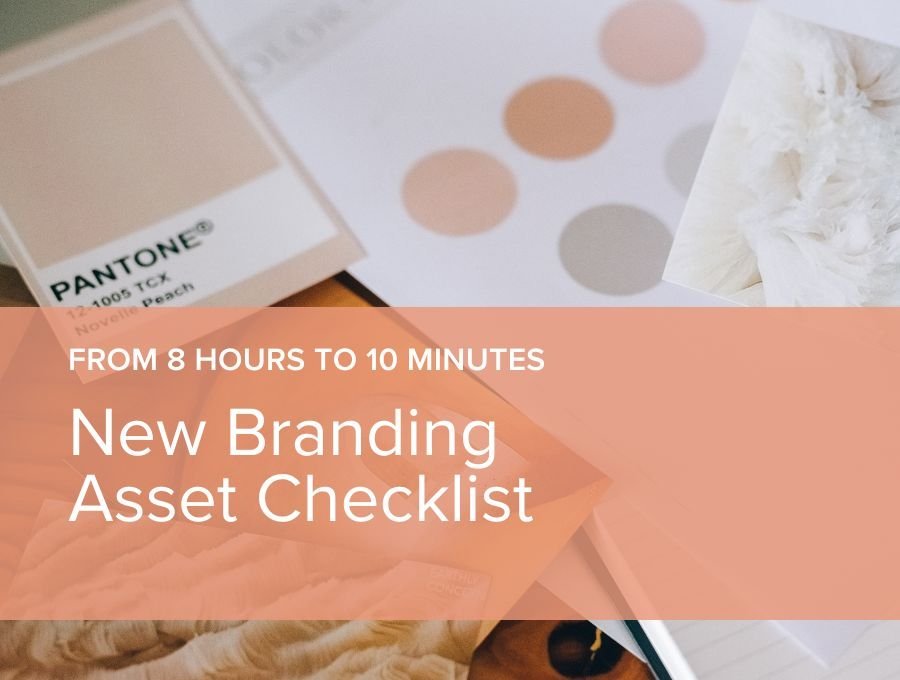From 8 Hours to 10 Minutes: The New Branding Asset Checklist
Here is our go-to list when you’re creating the visual identity for your brand. Each of these elements distinguishes your brand from other companies within your industry — so you want to be sure you’re selecting elements that your competitors are not.
Logo
Design a logo that reflects your brand personality and can be used across various mediums and formats, including web and print. Make sure you like it when it’s in color and black and white. And that at small sizes, your logo is still readable and recognizable. Depending on the design of your logo, you may need additional formats such as a horizontal and vertical version.
Color
Curate a simple but flexible palette. Be sure to include:
Primary colors: one to two main colors for your brand.
Secondary colors: three to five complementary colors used for design elements such as patterns or blocks of color and body text color.
Tertiary colors: additional colors used in illustrations or infographics. These can also include neutrals that you’d use for light backgrounds.
Typography
Select typefaces that complement each other that are easy to read, and amplify your brand personality. Consider mixing serif and sans serif. Test for legibility in print and on-screen. A tool I share with clients is https://www.fontpair.co/
Photography
Whether you’re creating your own photography, using stock, or a mix of both — you want to have a consistent style to help your brand be unique and identifiable. To do this, you can identify similarities that could include:
Style - portrait, documentary, posed, artistic, modern, vintage
Color - try including your brand colors in props, clothes, or accents, or are you using all black and white or black & white with a pop of color overlay
Angles & Cropping - perhaps your photos are all cropped close up or at a wide-angle
Get the New Branding Asset Checklist
Design Element
These elements include patterns, icons, infographics, or other design elements that you will regularly use in your visual design. You want all of these elements to have a cohesive look and feel across your communication pieces.
Brand Style Guide
These are the instructions and rules on how to use your brand elements. Be sure to consider how all of your brand elements relate to each other. Create a logical, intuitive system to maintain consistency while adding some surprise and delight.
—
If you’re doing much of the creation without the consistent assistance of a designer, make it easy on yourself. Have a handful of templates that you start with and work from there. Don’t try to create something new every time and maintain consistency but do add a bit of variety for interest.
Get our go-to list for all this PLUS a list of assets for social media and more with dimensions and file sizes.



